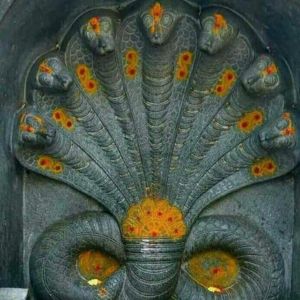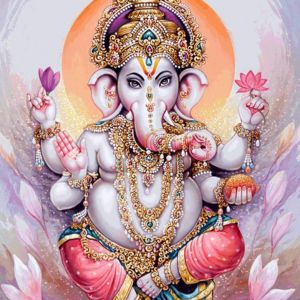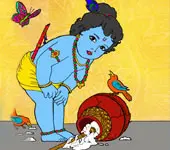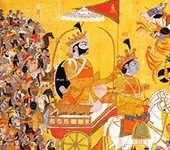Genealogy Of The Kuru Vamsha
Transcript
(Click here to read more)
Ugrashrava Sauti is narrating Mahabharata to Shaunaka Maharshi and other Rishis assembled at Naimisharanya. First he spoke about some important members of the Maharshi's own vamsha, the Bhrigu vamsha and narrated how Astika put an end to the Sarpa Yajna of Janamejaya intended for the extermination of the Naga vamsha. This story also established how Brahmana dharma is quite different from Kshatriya dharma. Brahmana's duty is to protect all beings. It is the Kshatriya who has the authority to punish. Now, Mahabharata is centred around the Bharata Vamsha or the Kuru Vamsha. The 95t....
Transcript
(Click here)
Ugrashrava Sauti is narrating Mahabharata to Shaunaka Maharshi and other Rishis assembled at Naimisharanya. First he spoke about some important members of the Maharshi's own vamsha, the Bhrigu vamsha and narrated how Astika put an end to the Sarpa Yajna of Janamejaya intended for the extermination of the Naga vamsha. This story also established how Brahmana dharma is quite different from Kshatriya dharma. Brahmana's duty is to protect all beings. It is the Kshatriya who has the authority to punish.
Now, Mahabharata is centred around the Bharata Vamsha or the Kuru Vamsha. The 95th chapter of the Sambhava Parva describes the genealogy of the Pandavas and Kauravas.
We will now to go through this in brief.
The Kuru vamsha originated from Daksha Prajapati.
Not only the Kuru vamsha, for most of the living beings, Daksha Prajapati is the progenitor.
He was the son of the 10 Prachetaas.
In fact, the 10 Prachetaas stand for the 10 Indriyas that give rise to consciousness of the world.
Daksha Prajapati had a thousand sons but they all relinquished the world.
They didn't want to engage in the process of creation.
Then Daksha had 50 daughters.
Out of these, 10 were married to Dharma, 13 to Kashyapa, and 27 to Chandra.
Aditi gave birth to Vivaswan from Kashyapa.
Vaivaswata Manu was Vivaswan's son.
He was the first ruler of the present Manwantara, the Vaivaswata Manwantara.
All the Manavas, the human beings are descendents of Manu.
The lifespan of the universe is 4.32 billion years.
It is called a kalpa.
The kalpa is divided into 14 Manwantaras each one ruled by a particular Manu.
From the beginning of the kalpa, now we are in the 7th Manvantara.
The ruler of this Manvantara is Vaivaswata Manu, son of Vivaswan.
All the Kshatriya descendents of Vaivaswata Manu perished due to internal fights.
Then later, Pururava was born as the son of Ila and planet Budha.
Later, Ila became a man and came to be called Sudyumna.
Pururava inherited the kingdom from Sudyumna.
The story of Ila and Pururava is given in detail in Devi Bhagavata.
Pururava was a Brahmin-hater and did atrocities to them.
He had six sons from the apsara Urvashi.
One among them was Ayu.
Nahusha was Ayu's son.
Nahusha became Indra, the ruler of Swargaloka.
But he was arrogant and cursed by Sage Agastya to become a snake.
Yayati was Nahusha's son.
Devayani and Sharmishta were Yayati's wives.
He had two sons from Devayani and three sons from Sharmishta.
Due to the curse of Shukracharya, Yayati suddenly turned old but he was still unsatisfied with the enjoyments of the world.
He asked his 5 sons whether any one of them would gift his youth to him.
Puru did so.
Puru became the favorite of Yayati and inherited the kingdom from him.
Puru was a very prominent member of the vamsha.
It is also known by his name, Puru vamsha.
19th generation from Puru was DushyaCnta.
Bharata was Dushyanta's son.
Great grandson of Bharata was Hasti.
He only founded Hastinapur.
The great grandson of Hasti was Samvarana.
He is considered as the founder of Kuru vamsha.
He named his son also Kuru.
So Kuru vamsha is a branch of Puru vamsha.
Pratipa was the king of the sixth generation from Kuru.
Shantanu was Pratipa's son.
Bhishma was the son of Shantanu and Ganga.
He had two more sons from Satyavati - Chitrangada and Vichitraveerya.
They both died without children.
Vyasa was born to Satyavati from Parashara Maharshi even before she married Shantanu.
Upon Satryavati's command, he impregnated the wives of his late brothers to continue the vamsha.
Dhritarashtra and Pandu were born thus.
The Kauravas were sons of Dhritarashtra and the Pandavas were sons of Pandu.
This is the vamshavali of the Kauravas and the Pandavas starting from Daksha Prajapati.
Recommended for you
Mantra For Relief From Kalasarpa Dosha

सर्पराजाय विद्महे नागराजाय धीमहि तन्नोऽनन्तः प्रचोदया�....
Click here to know more..Ganesha Mantra for Blessings

om namaste gajavaktraaya herambaaya namo namah' . onkaaraakri'tiroopaaya sagunaaya namo namah' ......
Click here to know more..Santana Gopala Stotram

अथ सन्तानगोपालस्तोत्रम् ॐ श्रीं ह्रीं क्लीं ग्लौम्। दे�....
Click here to know more..
English Topics
Mahabharatam
Click on any topic to open
- 96 Two Curses That Worked against Karna
- 95 What is behind Calling the Five Brothers the Pandavas
- 94 Give up an Individual IF....
- 93 Fascinating Birth Story of the Kauravas
- 92 Overcoming Grief - Lessons from King Senajit's story
- 91 Yayati's Wisdom
- 90 Yayati's Story
- 89 Brahmacharis Can Bless And Curse
- 88 Human Nature - Comples Mix Of Good And Bad
- 87 Results Of Good Karma
Please wait while the audio list loads..
30
Ganapathy
Shiva
Hanuman
Devi
Vishnu Sahasranama
Mahabharatam
Practical Wisdom
Yoga Vasishta
Vedas
Rituals
Rare Topics
Devi Mahatmyam
Glory of Venkatesha
Shani Mahatmya
Story of Sri Yantra
Rudram Explained
Atharva Sheersha
Sri Suktam
Kathopanishad
Ramayana
Mystique
Mantra Shastra
Bharat Matha
Bhagavatam
Astrology
Temples
Spiritual books
Purana Stories
Festivals
Sages and Saints
